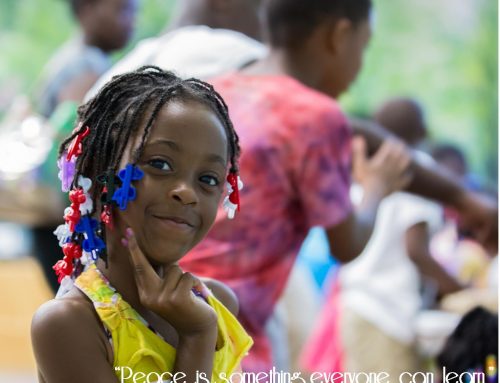Hello, I’m Lisa Robinson, guest blogger. As we continue to explore mindfulness, the focus in this post is on introducing mindfulness to children.
An excellent resource is the Collaborative for Academic, Social, and Emotional Learning (CASEL) www.casel.org , an organization dedicated to advancing the development of academic, social, and emotional competence for all students. Social and emotional learning, or SEL, is critical in developing these essential competencies: Self-Awareness, Self-Management, Social Awareness, Relationship Skills, and Responsible Decision-Making.
Here’s a video from edutopia.org that provides a great overview about SEL:
Psychologist and CASEL co-founder Daniel Goleman’s initial model of emotional intelligence is composed of the first four competencies in the list above. This model introduced the importance of emotional intelligence in business and other settings. Access Goleman’s web site at https://www.danielgoleman.info/ .
Mindfulness is an important key to learning and enhancing skills in SEL or emotional intelligence. In school, unless a child is able to pay attention, they will not learn effectively. In an interview about his book ‘Focus,’ Goleman said:
“At a school in Spanish Harlem I write about in Focus, I saw a second-grade class doing what they call a session of breathing bodies. The children lie on the floor with a favorite stuffed animal on their belly and watch it rise and fall, counting 1-2-3 with each breath. That strengthens the circuits for concentration and brings the mind back when it wanders.”
Helping children learn about mindfulness will be most effective if it starts out simply. Discuss it with them first since they might have questions or misperceptions. For example, they might think that anything involving meditation is only for religious leaders, or that it involves going into a trance, or is only for relaxation. However, as in Goleman’s example above, the simple breathing exercise can help even young children to practice mindfulness by learning to use focus and awareness.
It’s important that children are taught about mindfulness and any specific techniques such as meditation by someone who has practiced it in his or her own life. A mindfulness teacher who also practices mindfulness can encourage children to keep trying, especially when still learning how to do it. A mindfulness practitioner is also likely to best help children address any anxiety that might come up; learning to pay attention to oneself can feel uncomfortable.
Here is a link to view the Goleman interview referenced above: https://ow.ly/vtGlY
If you have any questions or topic suggestions for future posts, please contact me at mindfulpath@outlook.com
I’ll be looking forward to sharing more ideas in my next post.

